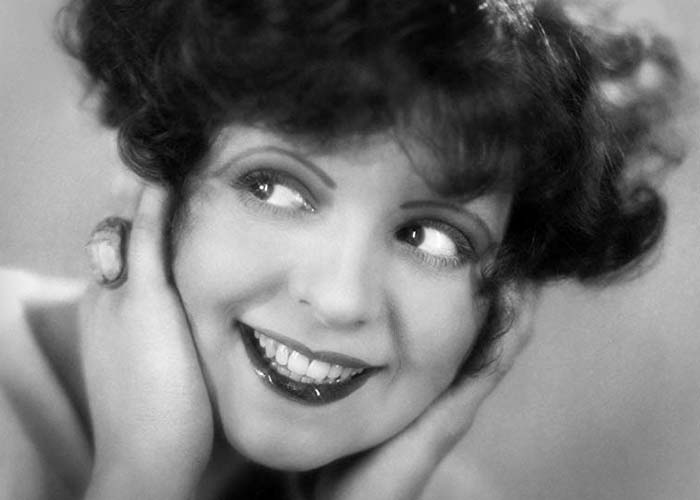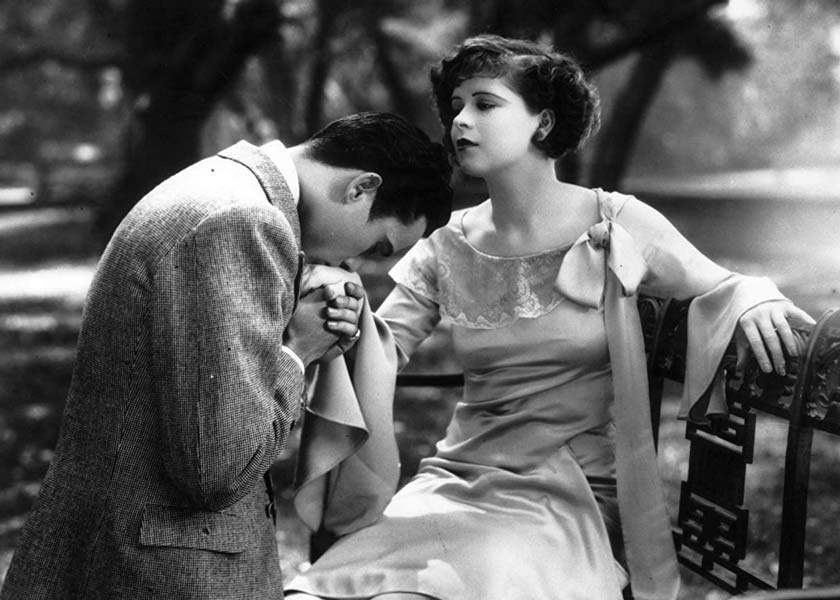Synopsis
In an introductory scene, the Duke of Albin (Swickhard) and the Marquis de Valens (Clark) betroth their children: Robert, 2 years old, to Simone, a baby.
Seventeen years later, the grown up children, Robert (Rogers) and Simone (Dunn), are planning their marriage. Robert leaves his family’s chateau and goes to Paris for the day. Meanwhile, Nancy Worthington (Bow), a visiting American, leaves her aunt in their hotel and goes out to see Paris. Nancy meets Robert when he gives up his taxi to her. Nancy briefly crosses paths with him several more times before they meet again at the Museum of Waxworks. They laugh about meeting once again, and he shows her around the museum. By accident, they get locked in the museum. Nancy spends the night sleeping on the couch of Princess Pauline, the sister of Napoleon. By morning they are very fond of one another, but Robert must return to his chateau and his wedding.
Despite his upcoming marriage, Nancy wants to see Robert again. She takes a cab to his estate, but when she arrives at the gates, changes her mind. As her cab starts to pull away, it crashes into the trees along the road. As the inhabitants rush out to help her, Nancy decides to stay and acts injured. The Duke invites her to recuperate at his villa.
Nancy meets Robert’s sweet fiancée and is pleased to learn that Simone loves another man and would welcome the cancellation of the wedding pact. Nancy decides to obtain Robert’s release from the contract. She has a plan. She flirts with Simone’s father, the Marquis, who fancies himself a lady-killer. Enthralled with beautiful, rogish Nancy, the Marquis proposes. She accepts on condition that he permits his daughter to marry the man of her choice. He agrees to this condition. The next part of her plan is to induce the Marquis to break their engagement. Nancy puts on her night clothes, brings Robert into her room, and makes a scene with him. Everybody rushes to her room and finds Robert and the scantily clad Nancy. Nancy pretends embarrassment over this compromising situation. Contrite, she tells the Marquis that he could not marry her now. The Marquis is too smitten to give her up so easily; he forgives her! The Duke, Robert’s father, has caught on to Nancy’s scheme and decides to help the young people. He persuades the Marquis that he cannot marry the compromised Nancy.
Now free, Robert and Nancy plan their marriage.
Discussion
This lightweight comedy, one of six Clara Bow made in 1927, displays the essence of the silent screen star. Bow was a natural for the camera, dazzling the viewer with her high-spirits, flirtatiousness, and sensuality. Her pantomime is dynamic, and, although she mugs constantly, the effect is alluring, amusing and appropriate. There are no dead moments on the screen when Clara is before the camera, and Clara is on screen as much as possible.
The potent effect of Clara Bow is highlighted in the text of a Paramount ad of 1926:
The Million Candle Power It Girl
16,000 fan letters a month: world’s record
Saucy, snappy Clara satisfies cravings of the time
For life, love, color, beauty

The resolution of Get Your Man is bedroom farce, with Clara, scantily
dressed, gathering the men in her boudoir and, after multiple comical situations,
achieving freedom for herself and Buddy. This scene emphasizes the attractions of
saucy, snappy
Clara, while maintaining an ingenuous and chaste tone.
Some footage is missing from the modern print, particularly during the museum
scene; the missing footage has been replaced by still photos and explanatory
titles. A significant portion of the comedy may be missing; the
Variety review describes the museum scene as the
real excitement of the footage and will tickle the populace.
Buddy Rogers' role in Get Your Man typifies his screen legacy as a handsome and pleasant leading man of the silent era. He had been in college in 1924, in the Paramount training program in 1925, and was the star of his first film in 1926. Get Your Man was his fourth film in a rapidly advancing career that reached its apex with his starring role in Wings (1926), the first winner of the Academy Award for Best Picture, and one of the most famous films of its time. After talkies arrived, Rogers’ career stalled. Most of his talkies are low-budget musical comedies.
Get Your Man is director Dorothy Arzner’s third film. Arzner’s task is relatively simple: set up the scenes to keep Clara at the center of the action and maintain a lively pace. Arzner had started at Paramount as a typist and advanced to editor and screenwriter. The head of the studio, B. P. Schulberg, encouraged her ambition to direct and in 1927, as a starting assignment, gave her two modestly budgeted films (Fashions for Women and Ten Modern Commandments) starring Esther Ralston, a rising young star. After her success with the Ralston films, Schulberg assigned Arzner to direct Clara Bow, the studio's most important star, in Get Your Man. In 1929, Schulberg gave Arzner the important task of easing Clara through her talkie debut in The Wild Party.
A woman director was no excitement for Variety reviewer Sid Silverman, who
notes that
Miss Arzner handles situations sufficiently well to make it breezy and easy on
brain power,
possibly the same review he would have given the efforts of a male director.
The film was known around the Paramount Studio as the all-woman production
;
in addition to the star and director, the screenwriters and business manager,
Henrietta Cohn, were women. The technical director for the museum scenes was
Marion Morgan, Arzner’s lifelong companion.
An all-woman production has been a very rare event in the history of Hollywood films. For many years, Arzner was the only female director in the industry, but she did not get many assignments after she left Paramount in 1932. She directed only six films before retiring in 1942.
Further Reading

